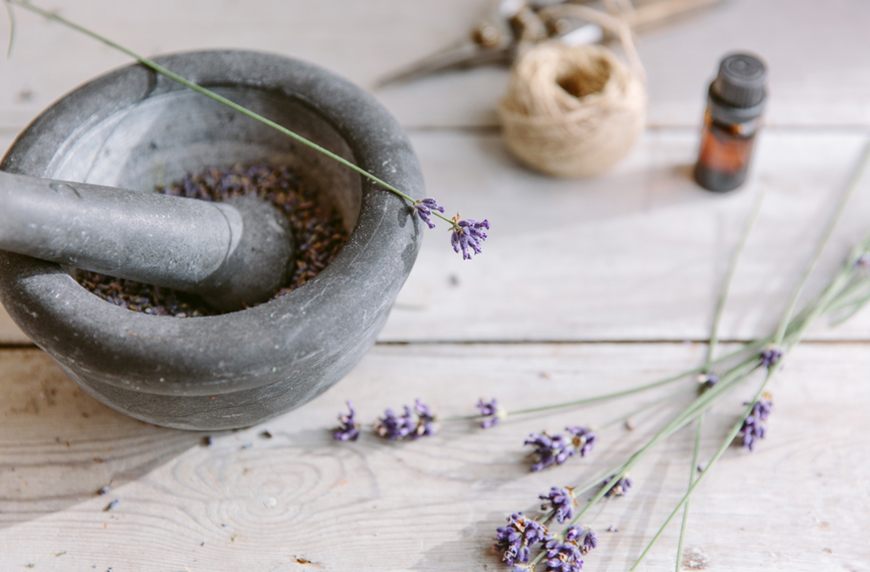If You’re Only Going to Use One Essential Oil, Make It One of These
Well, prepare for some weight to be lifted off your shoulders—literally. As it turns out, certain essential oils have adaptogenic properties, just like some medicinal mushrooms and on-trend herbs like maca and ashwagandha. This means they can either stimulate or relax your nervous system, depending on what your body needs in the moment.
These multitasking salves are the perfect option for anyone looking to streamline her oil collection. (Or just her Prada backpack.) A single hero EO that can help you rise above the 3 p.m. slump and calm you down when your boss throws a last-minute deadline your way? It may finally be time to KonMari your aromatherapy arsenal.

{{post.sponsorText}}
Keep reading to learn which essential oils have adaptogenic properties and how to use them.

Adaptogenic essential oils 101
The one thing that all adaptogenic oils have in common is that they have a balancing effect on the nervous system, says Jasmine Rausch, a certified yoga therapist and ambassador for Pilgrim Collection essential oils.
“Our bodies are always trying to achieve homeostasis, and the nervous system is going to respond to environmental signals,” she explains. “If the body is overloaded with stress and you’re using an oil to find some grounding, your nervous system will respond to the chemical components of the oils that offer those properties.” And the same goes for the stimulating components, she adds.
The best part: You probably already have a few adaptogenic oils in your collection. Rausch singles out lavender, lemon, and peppermint oils as ones you can turn to for both energy and sedation, although most people only look at them for one purpose or the other. “One of the things that contributes to the adaptogenic effect is the concentration of the oil,” she says. “If you’re using higher concentrations, the oil can be more stimulating. Lesser concentrations have more of a restorative effect.”
Rausch singles out lavender, lemon, and peppermint oils as ones you can turn to for both energy and sedation.
While these EOs are totally effective adaptogens when used solo, Rausch says you can enhance the effect you’re after by mixing them with complementary oils. “If I’m looking for something more relaxing I could use lemon and lavender, but I’m also going to layer in something that I know is solely calming for the nervous system, like chamomile,” she says. “On the other end, I could add in more stimulating oils [to the lavender and lemon base], like bergamot or ginger, to make that specific component more powerful. You’re creating this really cool synergy.”
When it comes to actually using the oils, Rausch recommends inhaling them—either directly from the vial or diffusing them—since you’ll be getting added nervous system-balancing benefits from deep breathing. And be sure to choose a fragrance you're totally obsessed with, she adds. “The nervous system needs to be open enough to the scent to respond to it in a positive way,” she says. “We’re looking to maintain homeostasis on a daily basis.” And if it saves you from having to swap out your oil edit every time you leave the house? Even better.
Adaptogens are about to get even buzzier in 2018, according to one expert. (Wait, is that even possible?) One great way to get your fix: In pancake form.
Loading More Posts...